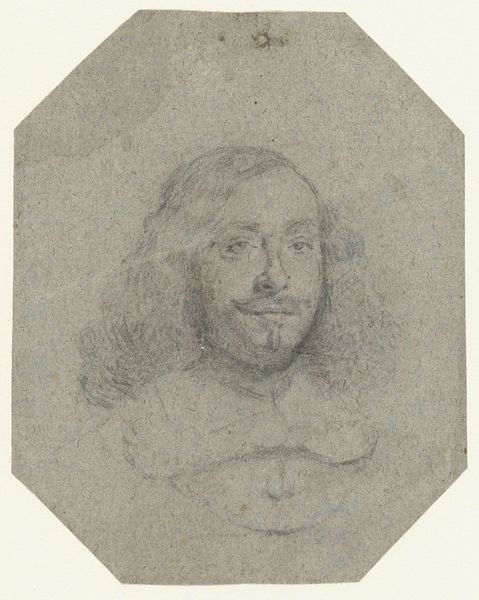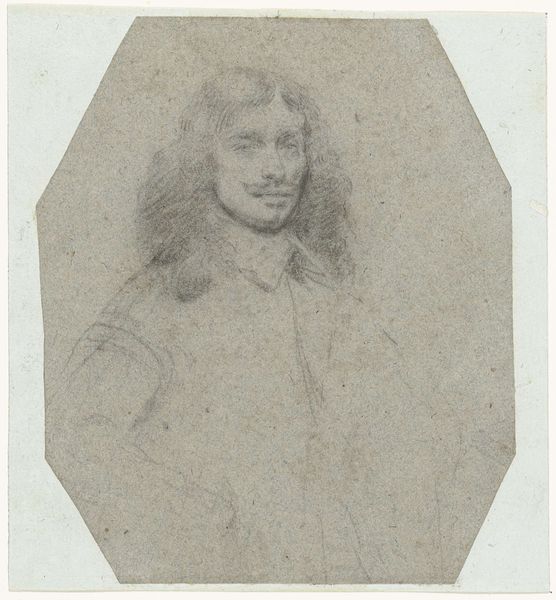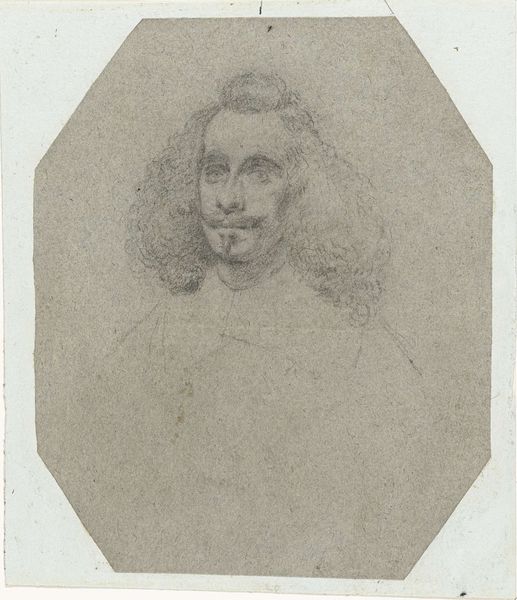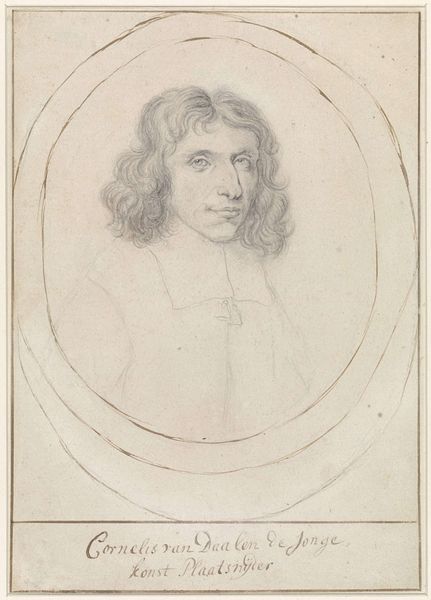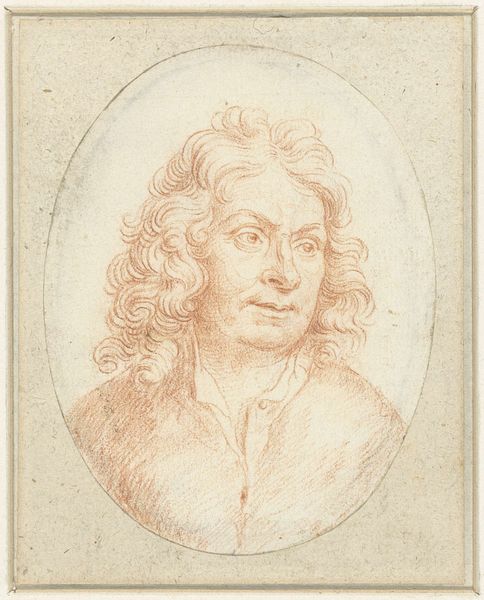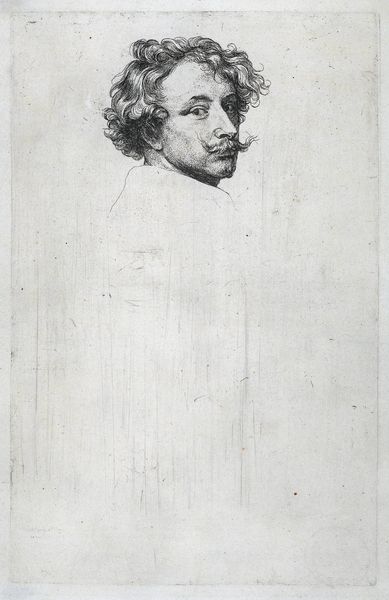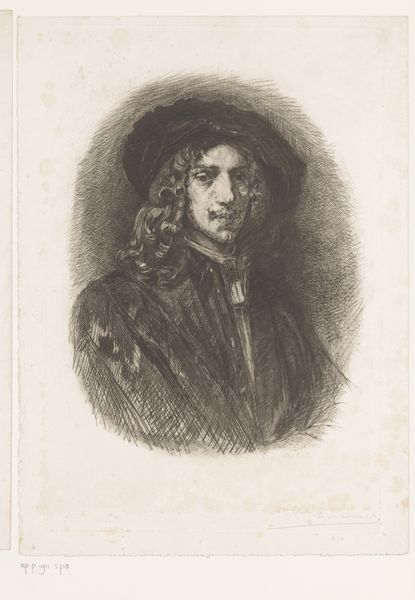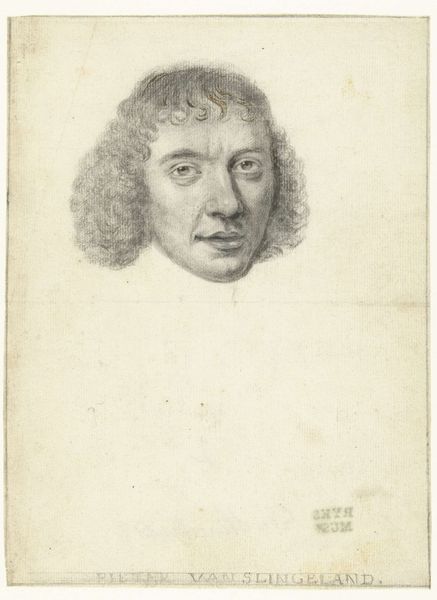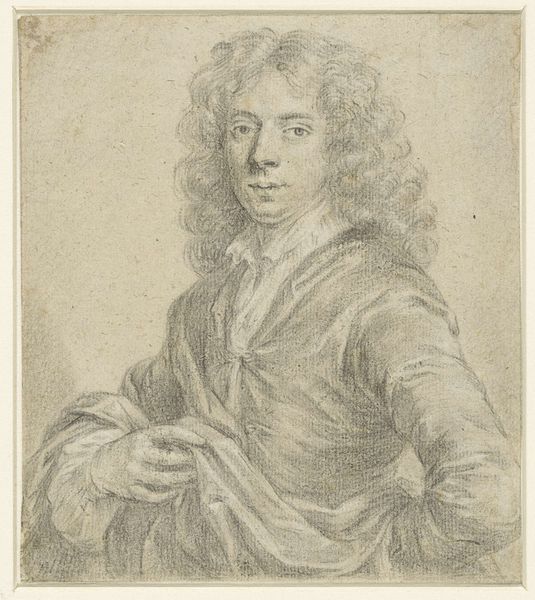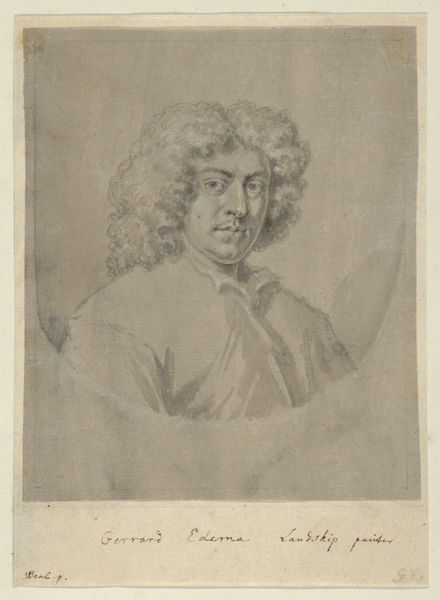
drawing, paper, pencil
#
portrait
#
pencil drawn
#
drawing
#
amateur sketch
#
aged paper
#
toned paper
#
light pencil work
#
pencil sketch
#
figuration
#
paper
#
11_renaissance
#
personal sketchbook
#
pencil drawing
#
pencil
#
sketchbook drawing
#
pencil work
#
northern-renaissance
Dimensions: height 154 mm, width 120 mm
Copyright: Rijks Museum: Open Domain
Gerard ter Borch created this head study of a gentleman with graphite on paper some time in the 17th century. It now resides in the Rijksmuseum. Trained in Haarlem, Ter Borch’s family background gave him connections to a well-to-do, humanist circle in Zwolle. He became known for his depictions of prosperous life in the Dutch Republic. During this time, the Dutch Republic saw an increase in the production of art. But what role did these images play? What values did they communicate? Portraits like this one were powerful signifiers of social status. The man’s clothing and hairstyle, though quickly sketched, signal to the viewer a certain amount of wealth. The man’s gaze communicates a sense of ease, even nonchalance. As historians, we turn to sources such as letters, inventories, and other visual materials to understand how such images functioned in their original context. These allow us to understand how art reflected and shaped the social world of the Dutch Republic.
Comments
No comments
Be the first to comment and join the conversation on the ultimate creative platform.
